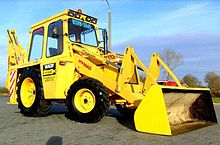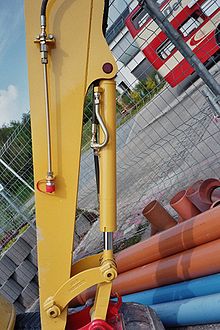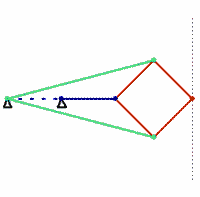User:Prof McCarthy/Inverted slider-crank



An Inverted slider-crank is a four-bar linkage that has a crank that rotates coupled to a slider that the moves along a straight line. In the inverted slider-crank the connecting rod, or coupler, becomes the ground link, so the slider is connected directly to the crank.[1]

bars of identical colour are of equal length
The Peaucellier linkage
[edit]The Peaucellier linkage (or Peaucellier–Lipkin cell, or Peaucellier–Lipkin Inversor), is an eight-bar linkage constructed from hinged joints that traces a pure straight line from a rotary input. It is named after Charles-Nicolas Peaucellier (1832–1913), a French army officer, and Yom Tov Lipman Lipkin (1846–1876), a Lithuanian Jew and son of the famed Rabbi Israel Salanter.[2][3]
This linkage clearly consists of eight-bars when you count the ground frame as a bar. The Chebychev–Grübler–Kutzbach criterion shows that and eight-bar linkage must have 10 single degree-of-freedom joints, while the Peaucellier linkage appears to have only six hinged joints. This is resolved by noting that four of the hinged joints each connect three bars. This is considered to be a special case of two joints that are located in the same place. Thus, six plus four provides the 10 one degree-of-freedom joints.
Eight-bar linkages are classified by how many binary, ternary and quaternary links that they have. A binary link connects two joints, a ternary link connects three joints and a quaternary link connects four joints. There are three basic types of eight-bar linkage denoted (4, 4, 0,0), (5, 2, 1, 0) and (6, 0, 2, 0), distinguished by the count of binary, ternary and quaternary links, when read from right to left.
The Peaucellier linkage is a (4, 4, 0, 0) eight-bar linkage.

The Jansen linkage
[edit]The eight bars of the Jansen linkage, which include the ground frame, are readily identified, and include two triangular links. In this case only seven of the 10 hinged joints are readily identified. However, there are three joints that connect three links. The first is the end of the drive crank, the second is the other base pivot and the third is one side of the triangle that forms the lower leg. Separating these overlapping joints provides three additional joints so there are 10 single degree-of-freedom joints.
The Jansen linkage is also of type (4, 4, 0, 0) because the ground link and input crank connect three joints, as do the two triangular links. The remaining four links are binary links.
See also
[edit]References
[edit]- ^ J. M. McCarthy and G. S. Soh, Geometric Design of Linkages, 2nd Edition, Springer 2010
- ^ "Mathematical tutorial of the Peaucellier–Lipkin linkage". Kmoddl.library.cornell.edu. Retrieved 2011-12-06.
- ^ Taimina, Daina. "How to draw a straight line by Daina Taimina". Kmoddl.library.cornell.edu. Retrieved 2011-12-06.
External links
[edit]- A six-bar straight-line linkage in the collection of Reuleaux models at Cornell University
- Mechanism animations including the Klann linkage
- Animations of a variety of linkages.
- A variety of six-bar linkage designs.
Category:Kinematics Category:Machines Category:Mechanisms (engineering) Category:Linkages (mechanical)
